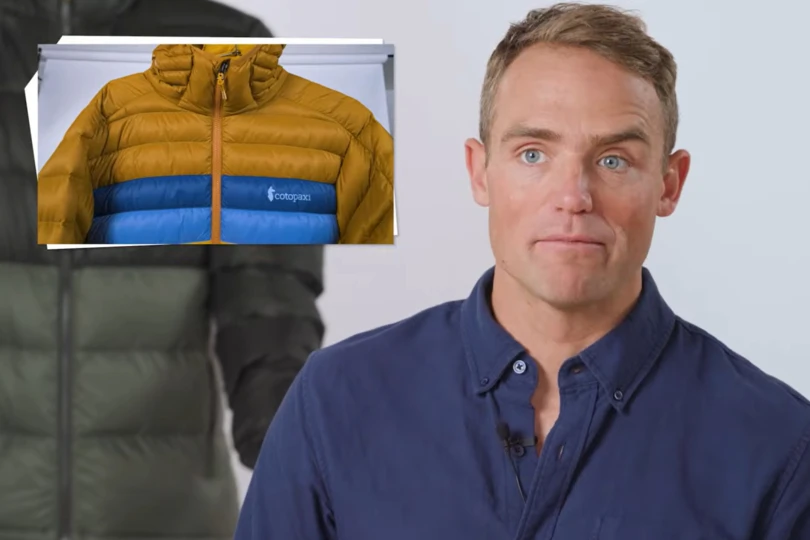[leadin]Yaks evolved in the harshest conditions on the planet with a fine, thick, durable, coat to insulate and protect them. Humans did not.[/leadin]

Fortunately, yak wool can be collected and knit into clothing that, from our testing, keeps two-legged users as warm and dry as the four legged source. This winter, we tested three pieces of apparel from the brand Kora to see how yak wool stacks up.
The short of it is that the Kora gear we tested is excellent, but comes at an eye-watering price. This is premium-grade apparel, and you’ll pay for it. But for those who want unique, top-of-the-heap base and mid-layers, this is an exciting new option with some touted performance and environmental sustainability benefits compared with wool. Read on for detailed reviews.
Kora Shola Baselayer Review (230 Weight Zip Top & Bottom)
Multiple testers have put the Shola 230 Zip ($160) base layer to the test this winter, and the verdict is that it is exceptional. Cut to an athletic fit, this 100 percent yak wool layer is warm, quick drying, and comfortable.

The yak wool feels similar to Merino wool on your skin. It is soft, but can be a little bit scratchy compared with synthetics. Most everyone, except those with extremely sensitive skin, will find the layer quite comfortable even for long outings.
Like Merino wool, yak wool is anti-microbial and we did not notice any smells developing on the Shola base layer even after several days of running and backcountry skiing.
Beyond the material, it has other design elements common in high-end baselayers: Flatlock seams are smooth against the skin, the YKK zipper is durable and reliable, and the embroidered logo brings an air of refinement.
The Shola 230 Leggings ($135) have the same qualities as the top. Our tester loved the 3/4 length fit as it works well with tall ski socks and boots.
Both these products are in the super pricey category, more expensive even than similar non-yak wool offerings from premier brands like Arc’teryx, Voormi, and Smartwool.
Azog Hooded Jacket Review
The Azog Hooded Jacket ($270) is a mid-layer that fits perfectly over the baselayer with the same ergonomic design. Crafted from a bi-layer fabric — woven yak wool on the inside and DuPont’s renewably sourced bio-polymer Sorona on the outside — the Azog is a cozy, very breathable mid-layer. The Sorona external fabric is a durable face that can handle backpack straps or other abrasion better than wool.

Of the dozens of “hoodies” I test each season, this immediately became a favorite due to its weather blocking properties and versatile little hood. With the Kora baselayer underneath, I’m not afraid to head out in the Azog with just a trucker hat and gloves, due to its natural wind- and water-resistance, even running at 9,000 feet near the Continental Divide.
I’m not saying it’s a game changer or a one-piece-fits-all, not by a long shot. It’s on par with similar mid-layer hoodies I’ve used from SmartWool or La Sportiva. But it breathes well when working up a sweat and it doesn’t build up moisture. Plus it zips up nicely with a cozy, lightweight hood that can go over a hat or under a helmet, and the sleeves come down long enough with the thumbholes to add a little extra warmth. The stylish, slim fit keeps drafts out, moves with you as you exert, and allows the yak wool to work its magic.
While still expensive, this mid-layer is more in line with the price of high-end mid-weight layers from other companies, probably thanks to the lower proportion of costly yak wool in the mix.
Yak Wool Advantages
Kora sources its wool from yaks living between 12,000 and 18,000 feet. Some people theorize that high altitude animals have finer, warmer wools (check out Voormi’s Rocky Mountain sheep as an American example).

In testing, we found it somewhat hard to tell the difference between yak wool and Merino. Our real-world experiments at 8,300 to 13,000 feet found the baselayers to be fine-woven and comfortable next to skin, and at least as warm and breathable as sheep’s wool garments.
Yak wool fibers are hollow, allowing them to trap air and provide high warmth-to-weight ratios. Kora founder Michael Kleinwort said the material outperformed Merino in independent laboratory testing boasting 40 percent more warmth, 66 percent greater air permeability, and 17 percent greater water vapor permeability than Merino wool fabrics.
Those are some bold statements, and hard to confirm through real world use. In testing by multiple GearJunkie editors, the yak wool does seem somewhat more breathable, although not remarkably different, than Merino.
We’ve also found the material to be extremely durable through both wear and washings, without pilling.
Wool Collected From Molting Yaks
In addition to performance that rivals Merino, the driving force behind Kora and its yak wool apparel is sustainability – priding itself on the economic stability the commerce provides Himalayan nomads, with no corporate farming, no shearing or harming of animals, and a boutique approach to craft and distribution.
Kora works with the Kegawa Herders Cooperative, a group of about 80 families on the Himalayan Plateau (spanning the controversial Chinese-Nepalese border). Kora agrees to buy all their wool at a set price each season, providing the herding families a more reliable and consistent income over time, and pays an extra stipend at the end of the collection season.
The process of yak wool production includes working around the molting season each spring when the animals shed their soft underlayer so that herders can avoid shearing (a process that in sheep is often linked to mulesing and cruelty). The yak wool is collected by hand, harvesting up to a kilo of wool per animal. This lengthens the lead time to get apparel to market and garments can take up to two years to produce. The longer hair of the animals is used by the nomadic herders to make ropes and tents. Community-based harvesting methods like this are low impact on the animals and the environment, but it does drive up the price to consumers.
Fashionistas among us may actually be more familiar with this fabric-tech than the hardcore outdoors crowd. The material can be found in small batch sweaters as an alternative to cashmere – typically considered the finest and softest of all wool fabric. But in our research, Kora is the first company to make performance outdoor apparel with yak wool.
Let’s face it, when you look good, you feel good, and while not the cheapest option out there by far, Kora accomplishes both handily.






